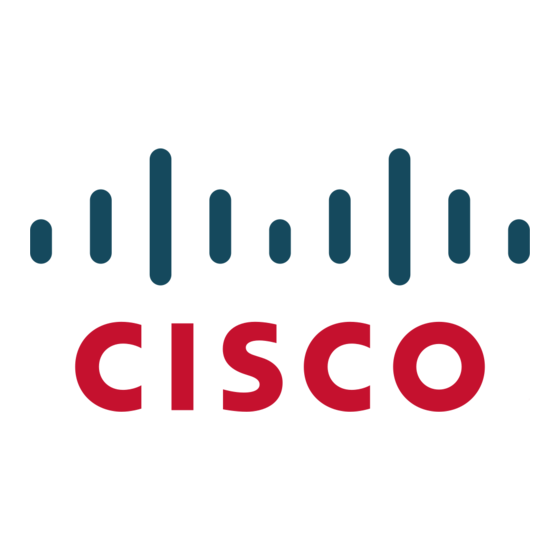Cisco 10000 Series 제품 게시판 - 페이지 5
{카테고리_이름} Cisco 10000 Series에 대한 제품 게시판을 온라인으로 검색하거나 PDF를 다운로드하세요. Cisco 10000 Series 12 페이지. Cisco systems router installation guide
Cisco 10000 Series에 대해서도 마찬가지입니다: 설치 매뉴얼 (14 페이지)

Figure 3
PTA
Service providers that wish to terminate the ATM and PPP access protocols and route subscribers' IP packets into the
core network can choose either the PPPoA or PPPoEoA protocols in the PTA architecture. The PPPoE protocol uses
a PPP client on the subscriber PC and offers the ability to run multiple PCs (or sessions) over a single ATM virtual
circuit. Conversely, the PPPoA protocol offloads the client to the customer premises equipment (CPE). This makes
the configuration of the PC much simpler, but only a single PPP session is supported per DSL connection.
PPPoX protocols are synonymous with the residential broadband market. This popular protocol provides a
well-understood method for subscriber authentication and IP address management. It has a strong legacy in the dial
market; consequently, many service providers are comfortable with its deployment. It also offers many features that
enhance scalability and flexibility of service offerings. The Cisco 10000 Series supports a comprehensive PPPoX
application suite, including extensive AAA/RADIUS attributes to allow flexible and scalable provisioning of services.
One advantage of PPPoX with authentication is service selection. Here, a subscriber can choose a destination
network or service attributes by selecting different logons or using a Web-based application. This capability is known
as Service Selection Gateway.
Layer 2 Tunneling Protocol Architectures
Many service providers offer access to DSL-connected subscribers for the purposes of wholesale services. In other
words, they give subscriber connections to the Internet service provider (ISP) for a percentage of the subscriber's
monthly subscription. In some cases, a provider will offer both retail and wholesale services. Retail services are
usually reserved for a service provider's own ISP and will use a PTA architecture, while wholesale services are offered
for alternative ISPs and use tunneling technologies such as Layer 2 Tunneling Protocol (L2TP).
L2TP technology allows the carrier to present subscriber PPP sessions in bulk to the alternative ISP at a given
remote location, and offloads authentication and IP address management services to the destination ISP. In the L2TP
model, there are two main devices: the L2TP access concentrator (LAC) and the L2TP network server (LNS). The
Cisco 10000 Series is usually configured as an LAC.
The LAC is situated in the carrier's POP and provides aggregation for the Layer 2 access medium (such as ATM). It
also provides a PPP switching service for subscriber sessions into the appropriate ISP's L2TP tunnel (Figure 4). After
the session arrives at the destination ISP's LNS, the PPP session is fully authenticated and IP services are started.
Subscriber IP packets from the LNS are routed to the Internet.
The wholesale provider has little to do with subscriber connections. The main purpose of this architecture is for mass
transportation of sessions from the POP to the ISP LNS.
All contents are Copyright © 1992–2003 Cisco Systems, Inc. All rights reserved. Important Notices and Privacy Statement.
Subscriber
DSLAM
IP
PPPoA or PPPoEoA
ATM
Cisco Systems, Inc.
Page 5 of 12
RADIUS/AAA
Cisco
10000
ATM
IP Network
Series
IP
